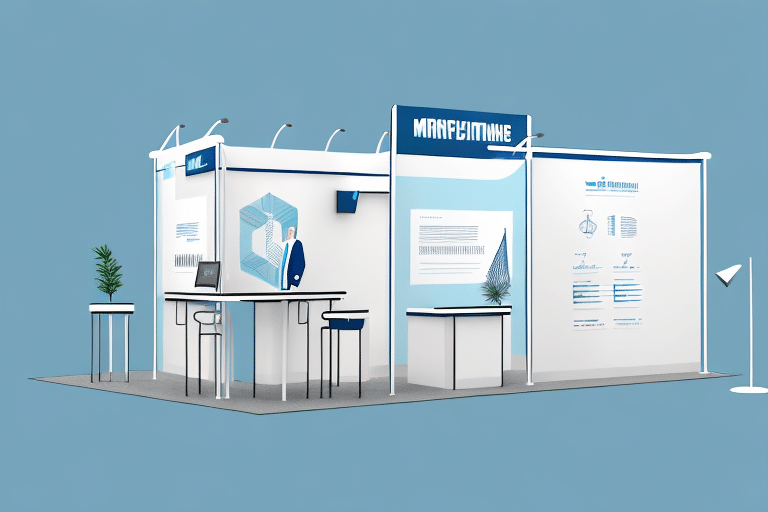Tips for Selecting the Perfect Trade Show Booth and Avoiding Common Problems
Trade shows serve as a pivotal platform for businesses to showcase their products and services to a vast audience. They facilitate direct interaction with potential customers, enabling companies to generate new leads and foster existing relationships. According to a Statista report, approximately 80% of trade show attendees have buying authority, making these events a lucrative opportunity for businesses aiming to increase sales and brand awareness.
To maximize the return on investment (ROI) from your trade show booth, it's essential to establish clear objectives, meticulously plan your budget, and leverage digital marketing channels such as social media to amplify your presence before, during, and after the event.
Moreover, trade shows offer the advantage of staying abreast with industry trends and innovations. By participating, businesses can gain insights into the latest products, services, and technologies, ensuring they remain competitive in the ever-evolving market landscape. Networking with other industry players during trade shows can also pave the way for strategic partnerships and collaborations.
Selecting and Designing the Perfect Trade Show Booth
Understanding the Different Types of Trade Show Booths
The choice of booth type significantly impacts your presence at a trade show. The most common types include:
- Pop-Up Booths: Favored for their ease of setup and affordability, making them ideal for businesses with budget constraints. However, they may lack the flexibility required for more extensive branding initiatives or product displays.
- Custom Exhibits: Offer a bespoke design tailored to your brand's specific needs, providing a high level of customization and branding opportunities. This comes with a higher cost and longer setup times.
- Hybrid Exhibits: Strike a balance between cost and customization, offering modular components that can be reconfigured for different booth sizes and layouts while maintaining a professional appearance.
Selecting the appropriate booth type requires a thorough understanding of your goals, budget, and target audience.
Choosing the Right Size and Layout
The size and layout of your trade show booth play a critical role in attracting foot traffic and facilitating effective engagement. Consider the following when making your selection:
- Booth Size: Ensure ample space to display products or services without overwhelming visitors. A well-sized booth can accommodate interactive displays and comfortable meeting areas.
- Layout Design: Promote a logical flow that guides visitors through your offerings. Incorporate accessible entry points, clear signage, and designated areas for demonstrations or consultations.
- Location on the Trade Show Floor: Booths in high-traffic areas may benefit from larger spaces to accommodate more visitors, while smaller booths in quieter areas should optimize space to avoid appearing sparse.
Top Design Trends to Stand Out
Adopting contemporary design trends can make your booth more appealing and memorable. Current trends include:
- Open Floor Plans: Encourage visitor movement and create a welcoming atmosphere.
- Engaging Graphics: Utilize high-impact visuals and branding elements to capture attention.
- Interactive Elements: Incorporate digital screens, virtual reality experiences, or interactive games to engage attendees actively.
- Sustainability: Use eco-friendly materials, energy-efficient lighting, and recyclable components to appeal to environmentally conscious attendees.
Incorporating Branding and Messaging
Your booth should effectively communicate your brand's identity and value proposition. Consider the following strategies:
- Consistent Branding: Integrate your brand's color scheme, logo, and tagline into the booth design for immediate recognition.
- Clear Messaging: Use concise and compelling statements that convey your unique selling points and resonate with your target audience.
- Aligned Marketing Materials: Ensure consistency with brochures, flyers, and digital content to reinforce your brand image across all touchpoints.
Selecting Materials and Equipment
The materials and equipment chosen for your booth contribute to its overall aesthetic and functionality. Key considerations include:
- High-Quality Flooring and Curtains: Enhance the visual appeal and professionalism of your booth.
- Display Screens: Use for showcasing product videos, presentations, or interactive content.
- Lighting: Implement energy-efficient and strategically placed lighting to highlight key areas and products.
- Practical Equipment: Ensure you have the necessary power outlets, furniture, and audio-visual equipment to support demonstrations and presentations.
Operational Best Practices for Trade Shows
Avoiding Common Mistakes
Preparation is key to avoiding common pitfalls associated with trade show participation. Common mistakes include:
- Arriving late to the event.
- Bringing inappropriate or insufficient booth materials.
- Neglecting essential items such as promotional materials or demonstration tools.
- Failing to have clear and concise literature to distribute.
To prevent these issues, develop a comprehensive checklist and timeline to ensure all necessary materials are prepared and that setup proceeds smoothly.
Preparing and Training Staff
Your booth staff are the face of your company at trade shows. It's vital to train them adequately by:
- Providing thorough knowledge of your products or services.
- Equipping them with skills to engage effectively with attendees.
- Encouraging proactive conversations and active listening.
- Ensuring they are personable and approachable to create a positive impression.
Engaging with Attendees and Lead Generation
Effective engagement strategies are essential for maximizing lead generation. Strategies include:
- Using active networking techniques, such as asking open-ended questions to understand attendees' needs.
- Employing persuasive sales language and creating interest hooks to capture attention.
- Offering incentives, such as giveaways or demos, to encourage interaction.
- Implementing technology solutions like lead scanning apps for efficient data collection.
Ensuring timely follow-up post-event is crucial in converting leads into business opportunities.
Measuring and Enhancing Trade Show Success
Metrics and Analysis
Measuring the success of your trade show participation involves analyzing various metrics, both quantitative and qualitative. Key performance indicators (KPIs) may include:
- Number of leads generated.
- Quality of interactions with attendees.
- Sales closed post-event.
- Overall ROI based on event costs versus generated revenue.
Utilizing tools such as CRM software and post-event surveys can provide valuable data to assess performance and inform future strategies.
Cost-Effective Participation Strategies
Participating in multiple trade shows annually can be a significant financial commitment. Implementing cost-effective strategies can help manage expenses while maximizing exposure:
- Early Booking: Secure exhibit space early to take advantage of discounts.
- Booth Material Reuse: Invest in modular or reusable booth components to reduce recurring costs.
- Targeted Show Selection: Choose trade shows that align closely with your target markets to ensure higher lead quality.
- Shared Booths: Partner with complementary businesses to share booth space and costs.
Following Up with Leads
Post-show follow-up is crucial in converting leads into customers. Effective follow-up strategies include:
- Sending personalized emails thanking attendees for their visit.
- Distributing targeted newsletters with relevant information.
- Making follow-up phone calls to discuss potential opportunities.
- Engaging through social media platforms to maintain connection.
Implementing a follow-up calendar or tracker ensures timely and organized engagement with leads, reinforcing your company's commitment and enhancing conversion rates.
Learning from Success: Case Studies of Effective Trade Show Exhibitions
Examining successful case studies provides valuable insights into effective trade show strategies. For instance, Samsung has consistently utilized interactive displays and product demonstrations to engage attendees at major electronics trade shows, resulting in increased brand visibility and sales leads.
Another example is Apple, which leverages minimalist booth designs and high-impact product showcases to draw significant attention and media coverage at their trade show participations. These approaches highlight the importance of aligning booth design and interaction strategies with brand identity and objectives to achieve substantial post-exhibition results.
By adopting similar strategies and tailoring them to your specific business needs, you can enhance your trade show presence and drive meaningful outcomes.
In conclusion, selecting the perfect trade show booth requires a strategic approach encompassing booth types, size and layout, design trends, branding, materials, and equipment. Coupled with operational best practices, effective engagement, and robust measurement strategies, businesses can maximize their trade show ROI and achieve their marketing objectives. Learning from successful case studies further reinforces the importance of tailored strategies in delivering impactful trade show performances.






















